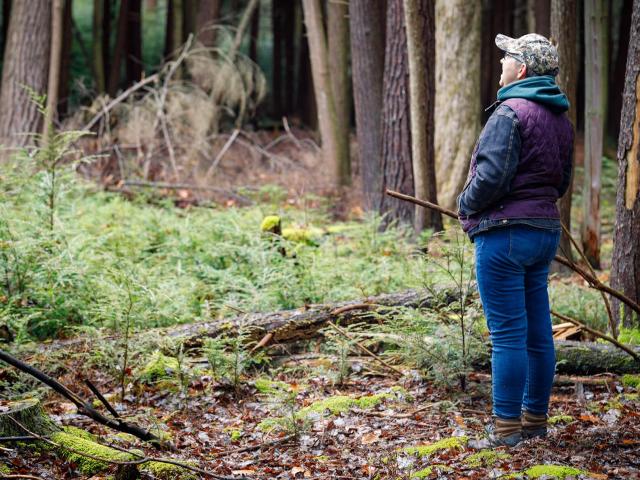
A USDA Conservation Innovation Grant (CIG) project is trying to reimagine how carbon markets can work with and for small landholders. The Family Forest Carbon Program (FFCP), led by the American Forest Foundation (AFF) and The Nature Conservancy, bases carbon payments on specific forest management practices that have been scientifically shown to increase the amount of carbon that gets removed from the atmosphere and stored in the trees and soil. The project’s goal is to facilitate the participation of nearly 300 million acres of family-owned American forests in carbon markets.
“The CIG funding allowed us to pivot in a number of ways, early on, that helped ensure we were creating a product that worked for the landholders,” said Christine Cadigan, Senior Director for the FFCP.
While the FFCP is still in its early stages, it has been successfully piloted in the Central Appalachian Region. The program has about 50 contracts with landowners, representing over 6,000 acres of forested land. This led to more funding, with the tech giant Amazon gifting about $7.5 million to the project in April 2020. According to the AFF, if 20% of U.S. family forest acres adopted practices that optimized carbon sequestration, about 3.5 gigatons of carbon dioxide equivalent would be sequestered by the end of the century.
CIG is a competitive program that supports the development of new tools, approaches, practices, and technologies to further natural resource conservation on private lands. Through creative problem solving and innovation, CIG partners work to address our nation's water quality, air quality, soil health and wildlife habitat challenges, all while improving agricultural operations.
For more details on how USDA’s Natural Resources Conservation Service is working with landholders to promote natural climate solutions, view the Can Family-Owned Forests Help the U.S. Achieve a Low-Carbon Future page.

